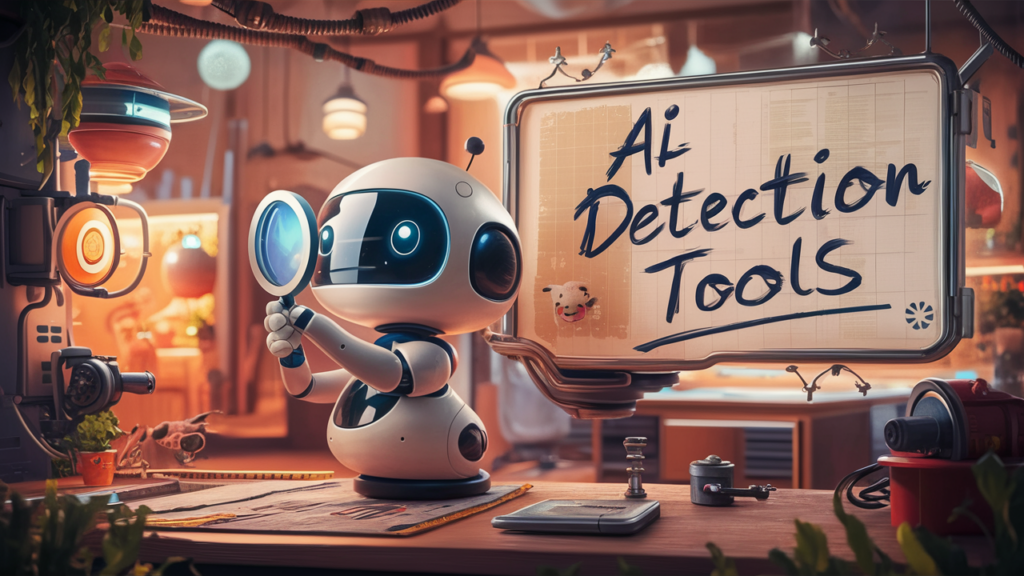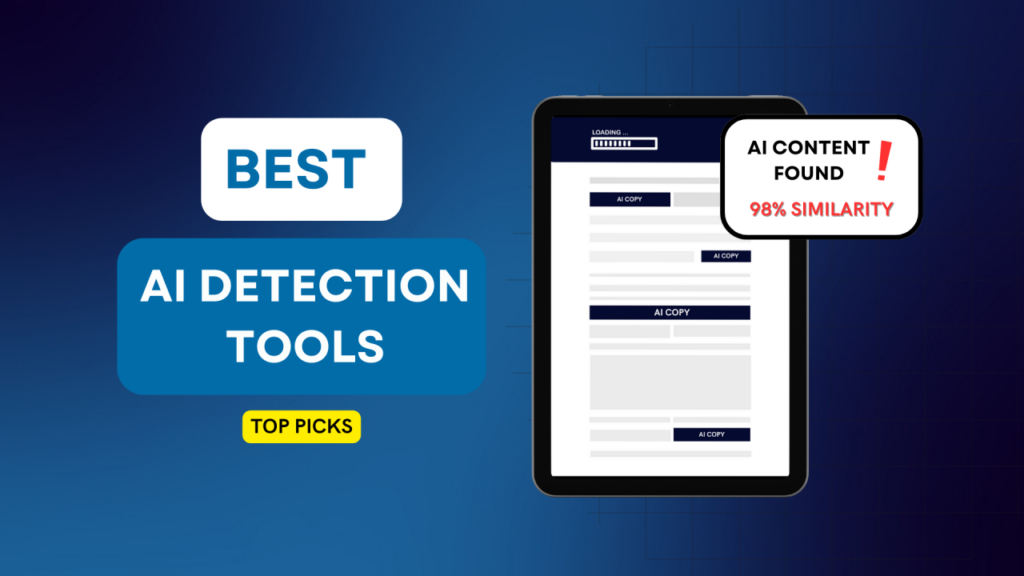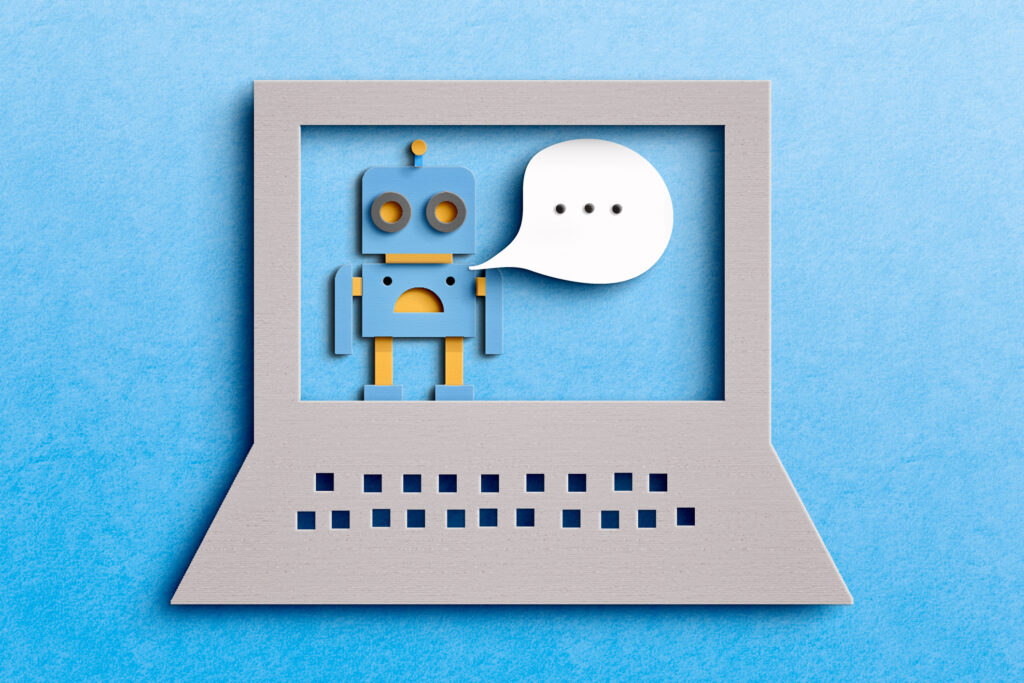
Artificial Intelligence (AI) is rapidly transforming industries, but with this growth comes the challenge of detecting and managing AI-generated content. Whether it’s for businesses, educators, or anyone concerned with digital integrity, finding the best AI detection tools is crucial. AI detection helps identify content generated by AI models, ensuring authenticity and transparency. But with so many tools available, how do you know which one is the best fit? In this article, we’ll explore the top AI detection tools, their features, and how to choose the right one for your needs.
What is AI Detection and Why Does It Matter?
Before diving into the best AI detection tools, it’s important to understand why detecting AI content is necessary. With AI models like GPT-3 and GPT-4 producing human-like text, it’s becoming harder to distinguish between machine-generated and human-created content. This can be problematic in sectors like education, journalism, and content marketing where originality and authenticity are critical.
AI detection tools analyze patterns in text or other content to determine whether it was generated by AI. These tools are used to combat issues such as plagiarism, fake reviews, or misinformation spread via AI-generated content.
Key Features to Look for in AI Detection Tools

When searching for the best AI detection tool, there are several features to consider:
Accuracy
The most critical aspect is accuracy. A good AI detection tool should be able to differentiate between human-written and AI-generated text with high precision.
Ease of Use
No one wants to spend hours learning how to use a tool. The best AI detection tools are intuitive and user-friendly, allowing even non-technical users to understand and apply them easily.
Speed
In fast-paced industries, speed is everything. Look for tools that can quickly scan content and deliver results in real time.
Integration Capabilities
Some AI detection tools offer integration with other platforms, such as content management systems (CMS) or plagiarism checkers. This can save time and streamline workflows.
Customizability
Different sectors have different needs. Some tools offer customizable settings, allowing users to tailor the detection algorithms based on specific parameters.
Cost
Of course, cost is always a consideration. Some AI detection tools offer free versions, while others require subscriptions. Balancing cost with functionality is key.
Top AI Detection Tools in 2024
Here’s a list of some of the best AI detection tools currently available:

Originality.AI
One of the top AI detection tools, Originality.AI focuses on detecting AI-generated text. It’s highly regarded for its accuracy, particularly when it comes to identifying content created by GPT-3 and GPT-4 models.
Pros:
- High accuracy for identifying AI-generated content.
- Offers plagiarism detection features.
- Real-time analysis for large volumes of text.
Cons:
- Subscription-based with limited free options.
GPTZero
GPTZero was one of the first AI detection tools to gain widespread attention. It’s especially popular in educational settings, where teachers use it to check student work for AI-generated content.
Pros:
- Strong in educational sectors.
- User-friendly and intuitive.
- Free to use for limited scans.
Cons:
- Accuracy may not be as high for non-GPT models.
CopyLeaks AI Detector
CopyLeaks has long been known for plagiarism detection, but it also offers AI detection capabilities. It’s particularly effective for scanning academic papers and digital content to ensure originality.
Pros:
- Dual function: plagiarism and AI detection.
- Supports multiple languages.
- Offers integrations with educational platforms.
Cons:
- Some features are only available in premium versions.
Writer.com AI Content Detector
Writer.com is another standout, offering a comprehensive suite of content tools, including AI detection. It’s a favorite among marketers and content creators for maintaining content authenticity.
Pros:
- Excellent for content marketing.
- Provides actionable suggestions on content improvements.
- Integrates with other writing tools.
Cons:
- Primarily tailored for marketers, which may not fit all needs.
OpenAI Detector
Given that OpenAI is behind some of the most advanced AI language models, it’s no surprise they offer their own detection tool. OpenAI’s AI detector is specifically designed to detect content produced by its own models, such as GPT-3 and GPT-4.
Pros:
- High accuracy for OpenAI-generated content.
- Free to use for limited scans.
- Continuously updated to match new model releases.
Cons:
- Limited capabilities for detecting content generated by non-OpenAI models.
How AI Detection Tools Are Used Across Industries

AI detection tools are employed in a variety of sectors, each with unique needs:
Education
Educators use AI detection to check for assignments or papers that may have been written by AI. With the rise of tools like ChatGPT, students can now create essays in minutes. Detection tools help ensure academic integrity.
Marketing
Content marketing is another area where AI detection is becoming increasingly relevant. Brands need to ensure that their content is authentic, both to build trust with their audience and to avoid SEO penalties from search engines.
Journalism
In journalism, ensuring the authenticity of news articles and reports is vital. AI detection helps journalists maintain credibility by ensuring that the content they publish is genuinely human-made.
Legal and Compliance
Law firms and compliance officers use AI detection tools to verify that legal documents, contracts, and other formal papers have not been AI-generated, maintaining the authenticity of official records.
The Future of AI Detection
AI is evolving rapidly, and so are the tools designed to detect its influence. As AI models become more advanced, we can expect AI detection tools to incorporate machine learning and natural language processing (NLP) techniques to stay ahead of the curve.
Another trend is the integration of AI detection into existing content management systems and digital platforms. For example, tools like Grammarly and Copyscape are already working on ways to merge AI detection with their existing features, making it easier for users to access multiple tools in one platform.
Choose the Right AI Detection Tool
The demand for AI detection is only going to grow as AI continues to become more sophisticated. When selecting the best AI detection tool for your needs, consider factors like accuracy, ease of use, speed, and cost. Different tools serve different sectors, so it’s crucial to choose one that aligns with your industry and specific requirements. Tools like Originality.AI, GPTZero, and CopyLeaks stand out for their unique features, but the right choice will depend on your individual needs.
In a world where AI is reshaping content creation, having reliable detection tools at your fingertips is essential for maintaining integrity and trust in the digital landscape.
FAQs About The Best AI Detection Tools:
Can AI detection tools guarantee 100% accuracy?
No tool can guarantee 100% accuracy, but many offer high precision, particularly when detecting content from popular AI models like GPT-3 and GPT-4.
Are AI detection tools free?
Some tools offer free versions with limited functionality, but most advanced features require a paid subscription.
How can AI detection tools help in education?
Educators use these tools to ensure that students are submitting original, human-written assignments, maintaining academic integrity.
Are AI detection tools useful for SEO?
Yes, AI detection can help ensure that your content is human-made, avoiding potential penalties from search engines that prioritize original content.
What happens if AI-generated content goes undetected?
If AI-generated content is used inappropriately, it could lead to plagiarism issues, credibility problems, and even legal consequences, depending on the sector.
